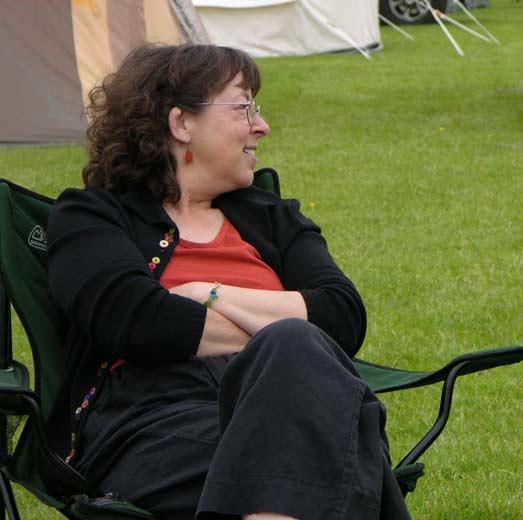
That I guess is what composition is all about. Your eye and mind know what you are seeing, a rise in the distance, a hollow nearby, a stark tree, a zigzag path. (A tall building :)
The difficulty comes in making the image show these things.
Because you know they are there, you see them more clearly than they really appear. But the image you make is only made of different coloured dots, spots, pixels, or brush strokes. It doesn't come with an accompanying commentary from a brain calculating heights, angles, depths, distances and perspective and taking note of what's beside above or below the boundaries of your image. Nor the sounds and smells and temperature of the moving air across it.
That is supplied by the person looking at the picture. And unless your composition somehow tells them otherwise, the first thing their brain will comment on is the flatness of the screen or surface of the image. The size of it. The colours of it. The colours of the surrounding wall or frame or monitor. The temperature in the room where it is being viewed or the difficulty of seeing certain details or the noise of the children, traffic, washing machine in their background.
What they know to be there is more important to their brain than what some one else is telling them is there. It's a survival thing! You need to be able to tell truth from fiction!
So your viewer doesn't see light, they see yellow or white. They don't see distance, they see lines converging in a flat plane. They certainly don't hear birds or feel the wind!
So your mission, should you choose to undertake it, is to tell a convincing lie because what you want is to persuade your viewer that they are seeing a hill or a valley or a piece of iron and that it is beautiful or significant or important to them. Perhaps momentarily more important than the realities of their life. You want them to suspend disbelief and be transported to a place where you, the photographer, were when you took the photograph. And then to see what it was that held you there.
I was brought up as a painter and sculptor and so I learnt the basic rules of composition as things you put into a piece right at the beginning. Things we know, as photographers, like diagonals, converging lines, horizons, contrasts and proportions. Frames, backgrounds. Things that compel the viewer to imagine something that isn't there.
Though a painter has to create from scratch, in some ways the task is easier. You can build your picture from the ground up, on the rules that will make it a convincing lie. A photographer has to find them in the view and then make sure that the image sits above those ground rules easily and naturally. They may not be there in the real life view! But if the view has entranced the photographer, chances are they are there somewhere because happily, what we consider beautiful is also often constructed in a way that will follow those rules and will contain those underlying structures.

 Photos may or may not illustrate. I just like them :)
Photos may or may not illustrate. I just like them :)





No comments:
Post a Comment